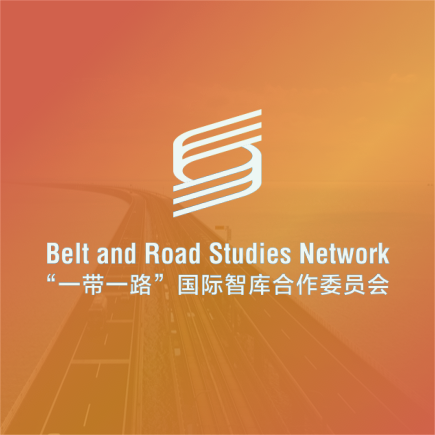
The Regional Comprehensive Economic Partnership (RCEP) has reached the threshold of entry into force and will take effect on January 1, 2022. As of December 7, 2021, 11 countries have ratified the agreement. These include six ASEAN countries, namely Brunei, Cambodia, Laos, Singapore, Thailand and Vietnam; as well as five non-ASEAN signatory countries, namely Australia, China, Japan, New Zealand, and South Korea. Once RCEP is implemented on January 1, 2022, it should serve as a key engine of trade and investment, and promote a more inclusive economic recovery in ASEAN in 2022 and beyond. Its economic impacts can be summarized into three aspects.
First, RCEP reduces import tariffs and consolidates rules of origin in ASEAN+1 free trade agreements (e.g. ASEAN-China FTA, ASEAN-Japan FTA). It eliminates as much as 90 percent of tariffs on goods traded between its signatories over the next 20 years from the date of its entry into force (Chapter 2). In 2022, China – one of the top three export markets of ASEAN countries – will eliminate about 70 percent of its tariffs on products imported from ASEAN, while ASEAN developing countries such as Brunei, Singapore, Thailand, and Vietnam – who have ratified the agreement – will eliminate about 75 percent of their tariffs on imported products from China. The remaining tariffs will be gradually eliminated over 20 years.
To increase firms' utilization of preferential tariffs, RCEP consolidates different rules of origins in ASEAN+1 FTAs and sets regional content rules (Chapter 3). Many products require at least 40 percent of their value to be added within RCEP partners to take advantage of preferential tariffs. This is particularly important for the development of high-tech value chains such as electronics and automobiles, where parts and components are manufactured in different countries in the region. Therefore, the relatively high tariff liberalization coupled with harmonized rules of origin in RCEP should not only save costs and increase profits for traders, but also facilitate ASEAN firms' participation in the regional and global value chains.
Second, RCEP should enhance the harmonization of non-tariff measures (NTMs) such as product standards for food safety, packaging and labeling requirements by promoting the transparency, adoption of international standards, and mutual recognitions of conformity assessment procedures of RCEP partners (Chapter 5 and Chapter 6). Despite progress in tariff liberalization under the ASEAN Free Trade Area and the ASEAN Trade in Goods Agreement, businesses have long complained about the complexity and compliance costs of NTMs imposed by ASEAN governments and their trading partners.
NTM-related costs for traders and producers include gathering information on regulatory requirements in different markets, adjusting the specification of goods and services to comply with different regulatory requirements of importing countries, and complying with different conformity assessment procedures across importing countries.
The RCEP provisions on transparency and adoption of international standards require regulators of its members to embed international best practices into their domestic rule-making procedures and to prevent regulations creating unnecessary barriers to trade. In addition, mutual recognition of conformity assessment results between two or more RCEP partners helps ensure that traders do not face duplicative requirements or procedures when regulations differ across markets.
Finally, RCEP is expected to stimulate cross-border e-commerce and to facilitate SMEs' participation in international trade. It creates a conducive environment for e-commerce such as protection of online consumers and online personal data, while facilitating cross-border transfer of information by electronic means and preventing the use of local data storage requirements as a condition for conducting e-commerce in RCEP partners (Chapter 12).
The rise of e-commerce presents an opportunity for SMEs to participate in e-commerce, and hence strengthening SMEs' recovery from the pandemic in 2022 and beyond. In Singapore, for example, the share of online retail sales in total retail sales last year doubled its pre-pandemic level, rising from only 5.9 percent in 2019 to 11.7 percent in 2020. The on-going COVID-19 pandemic, especially the highly infectious variants such as Delta and Omicron, has reinforced the importance of e-commerce in strengthening regional trade recovery.
However, the benefits of digitalization for SMEs are not automatic. They require SMEs to invest in adopting digital technologies and acquiring new skills to leverage data-driven innovation. At the same time, they also require that ASEAN governments provide a supportive domestic and international operating environment. In this regard, the commencement of RCEP in 2022 is the right time to translate the RCEP provisions on e-commerce into national action plans of ASEAN countries. This should pave the way for creating a greater coherence of legal framework for cross-border e-commerce, while improving SMEs' ability to adapt to the e-commerce in the region.
今年1月,新冠疫情突然而至。为了防止疫情扩散,我国采取了史无前例的交通阻断及人流限制措施,这也为我国农业农村经济发展带来了巨大挑战。

The Xinhua Institute, a think tank affiliated with Xinhua News Agency, on Friday issued a report in Kuala Lumpur, capital of Malaysia, titled "RCEP and the Vision of the Maritime Silk Road: New Frontiers for China-ASEAN Cooperation."
2025-04-14